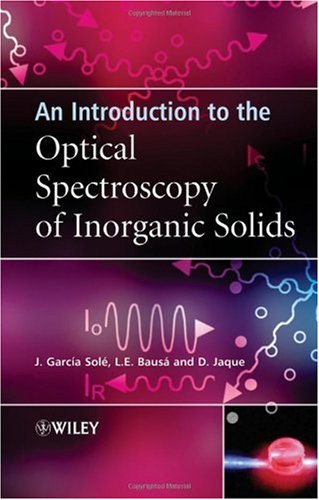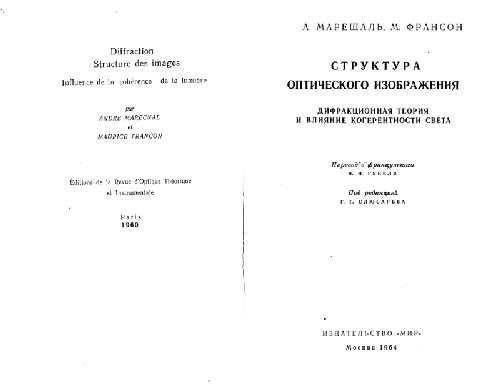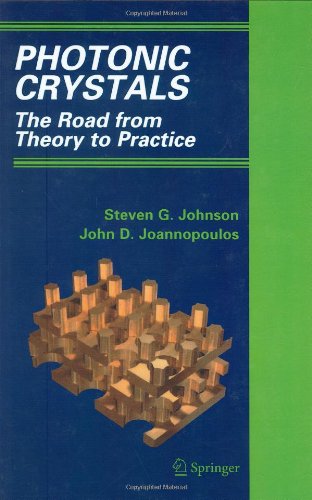Jose Solé, Luisa Bausa, Daniel Jaque0470868856, 9780470868850, 9780470868874, 0470868864, 9780470868867
This is an ideal beginner’s guide for students with some previous knowledge in quantum mechanics and optics, as well as a reference source for professionals or researchers in materials science, especially the growing field of optical materials.
Table of contents :
An Introduction to the Optical Spectroscopy of Inorganic Solids……Page 4
Contents……Page 10
Preface……Page 14
Acknowledgments……Page 18
Some Physical Constants of Interest in Spectroscopy……Page 20
A Periodic Table of the Elements for Optical Spectroscopy……Page 22
1.1 The Origins of Spectroscopy……Page 24
1.2 The Electromagnetic Spectrum and Optical Spectroscopy……Page 25
1.3.1 The Absorption Coefficient……Page 31
1.3.2 The Measurement of Absorption Spectra: The Spectrophotometer……Page 34
1.3.3 Reflectivity……Page 38
1.4 Luminescence……Page 39
1.4.1 The Measurement of Photoluminescence: The Spectrofluorimeter……Page 40
1.4.2 Luminescent Efficiency……Page 43
1.4.3 Stokes and Anti-Stokes Shifts……Page 45
1.4.4 Time-Resolved Luminescence……Page 48
1.5 Scattering: The Raman Effect……Page 51
1.6 Advanced Topic: The Fourier Transform Spectrometer……Page 56
Exercises……Page 59
References and Further Reading……Page 61
2.1.1 Thermal Radiation and Planck’s Law……Page 62
2.2 Lamps……Page 64
2.2.2 Spectral Lamps……Page 65
2.2.3 Fluorescent Lamps……Page 66
2.2.5 Solid State Lamps……Page 67
2.3.1 Lasers as Light Sources in Spectroscopy……Page 68
2.3.2 The Basic Principles of Lasers……Page 70
2.3.3 Population Inversion: the Threshold Condition……Page 71
2.3.4 Pumping Techniques……Page 74
2.4 Types of Lasers……Page 75
2.4.1 The Excimer Laser……Page 76
2.4.2 Gas Lasers……Page 78
2.4.3 Dye Lasers……Page 80
2.4.4 Semiconductor Lasers……Page 83
2.4.5 Solid State Lasers……Page 85
2.5.1 Tunable Solid State Lasers……Page 87
2.5.2 Tunable Coherent Radiation by Frequency-Mixing Techniques……Page 90
2.5.3 Optical Parametric Oscillation and Amplification……Page 91
2.6 Advanced Topics: Site Selective Spectroscopy and Excited State Absorption……Page 94
2.6.1 Site Selective Spectroscopy……Page 95
2.6.2 Excited State Absorption……Page 96
References and Further Reading……Page 97
3.2 Monochromators……Page 100
3.3 Detectors……Page 105
3.3.1 Basic Parameters……Page 106
3.3.2 Types of Detectors……Page 107
3.4.1 The Working Principles of a Photomultiplier……Page 116
3.4.2 Noise in Photomultipliers……Page 120
3.5.2 The Lock-in Amplifier……Page 124
3.5.3 The Photon Counter……Page 126
3.5.4 The Optical Multichannel Analyzer……Page 128
3.6 Detection of Pulses……Page 129
3.6.2 The Boxcar Integrator……Page 130
3.7.1 The Streak Camera……Page 131
3.7.2 The Autocorrelator……Page 133
References and Further Reading……Page 135
4.2 Optical Magnitudes and the Dielectric Constant……Page 136
4.3 The Lorentz Oscillator……Page 139
4.4 Metals……Page 145
4.4.1 Ideal Metal……Page 146
4.4.2 Damping Effects……Page 149
4.5 Semiconductors and Insulators……Page 150
4.6 The Spectral Shape of the Fundamental Absorption Edge……Page 154
4.6.1 The Absorption Edge for Direct Transitions……Page 156
4.6.2 The Absorption Edge for Indirect Transitions……Page 158
4.7 Excitons……Page 162
4.7.1 Weakly Bound (Mott–Wannier) Excitons……Page 163
4.7.2 Tightly Bound (Frenkel) Excitons……Page 166
4.8 Advanced Topic: The Color of Metals……Page 167
Exercises……Page 169
References and Further Reading……Page 172
5.1 Introduction……Page 174
5.2 Static Interaction……Page 175
5.2.1 Crystalline Field Theory……Page 176
5.2.2 Molecular Orbital Theory……Page 182
5.3.1 The Absorption Probability……Page 184
5.3.2 Allowed Transitions and Selection Rules……Page 186
5.3.3 Polarized Transitions……Page 188
5.3.4 The Probability of Spontaneous Emission……Page 189
5.3.5 The Effect of the Crystal on the Transition Probabilities……Page 190
5.3.6 Oscillator Strength: Smakula’s Formula……Page 191
5.4 Dynamic Interaction: The Configurational Coordinate Diagram……Page 193
5.5 Band Shape: The Huang–Rhys Coupling Parameter……Page 198
5.6 Nonradiative Transitions……Page 204
5.6.1 Multiphonon Emission……Page 205
5.6.2 Energy Transfer……Page 206
5.6.3 The Concentration Quenching of Luminescence……Page 211
5.7 Advanced Topic: The Determination of Quantum Efficiencies……Page 214
Exercises……Page 218
References and Further Reading……Page 220
6.1 Introduction……Page 222
6.2.1 Trivalent Rare Earth Ions: The Dieke Diagram……Page 223
6.2.2 Divalent Rare Earth Ions……Page 228
6.3 Nonradiative Transitions in Rare Earth Ions: The ‘Energy-Gap’ Law……Page 229
6.4 Transition Metal Ions……Page 233
6.4.1 3d(1) Ions……Page 234
6.4.2 3d(n) Ions: Sugano–Tanabe Diagrams……Page 235
6.5 Color centers……Page 243
6.6 Advanced Topics: The Judd and Ofelt Formalism, and Optical Cooling of Solids……Page 247
6.6.1 The Judd and Ofelt Formalism……Page 248
6.6.2 Optical Cooling of Solids……Page 251
Exercises……Page 254
References and Further Reading……Page 256
7.1 Introduction……Page 258
7.2 Symmetry Operations and Classes……Page 259
7.3 Representations: The Character Table……Page 263
7.4 Reduction in Symmetry and The Splitting of Energy Levels……Page 267
7.5 Selection Rules for Optical Transitions……Page 274
7.6 Illustrative Examples……Page 276
7.7 Advanced Topic: The Application to Optical Transitions of Kramers Ions……Page 279
Exercises……Page 283
References and Further Reading……Page 285
Appendix A1 The Joint Density of States……Page 286
Appendix A2 The Effect of an Octahedral Field on a d(1) Valence Electron……Page 289
Appendix A3 The Calculation of the Probability of Spontaneous Emission by Means of Einstein’s Thermodynamic Treatment……Page 294
Appendix A4 The Determination of Smakula’s Formula……Page 297
Index……Page 300







Reviews
There are no reviews yet.